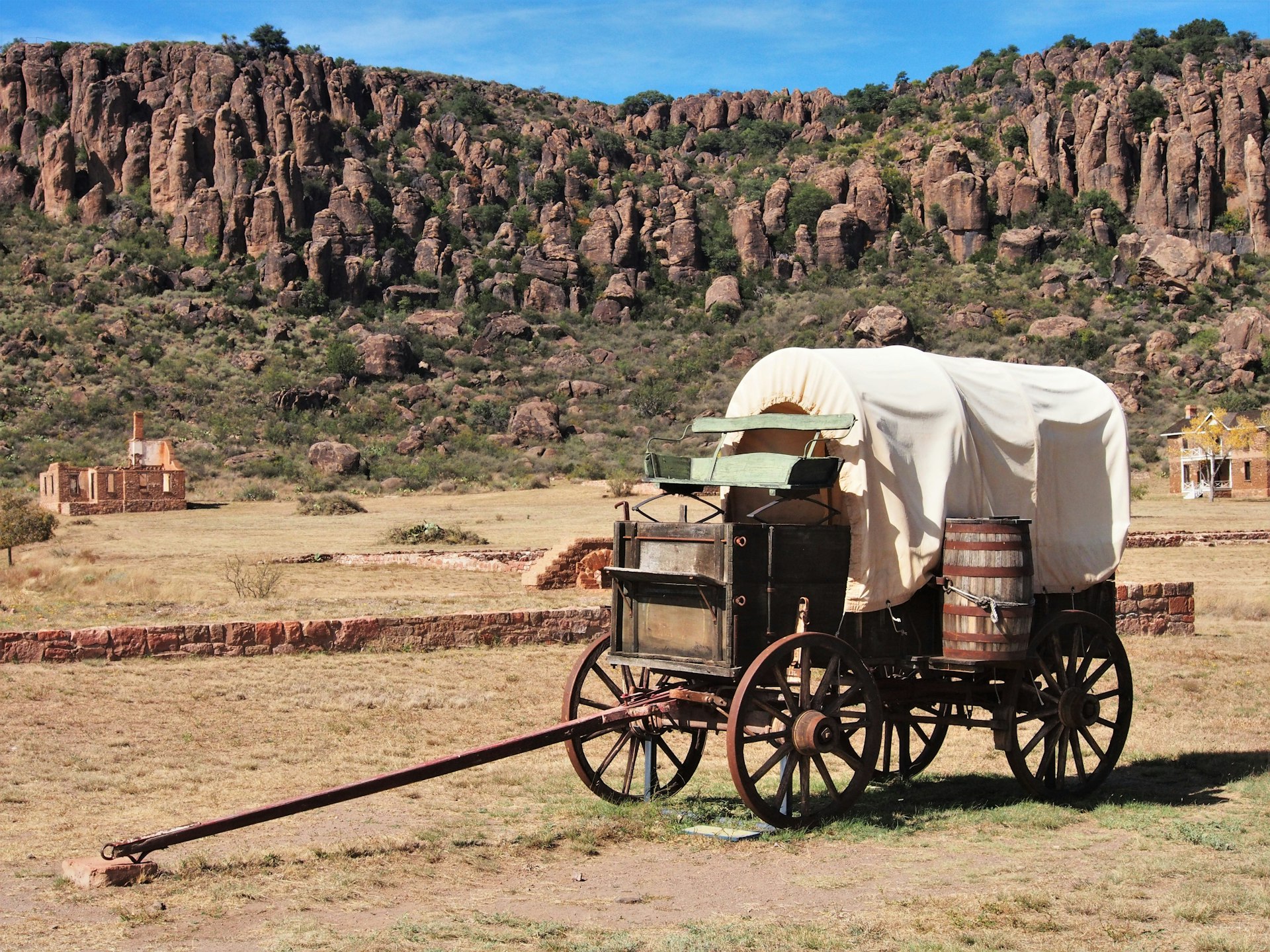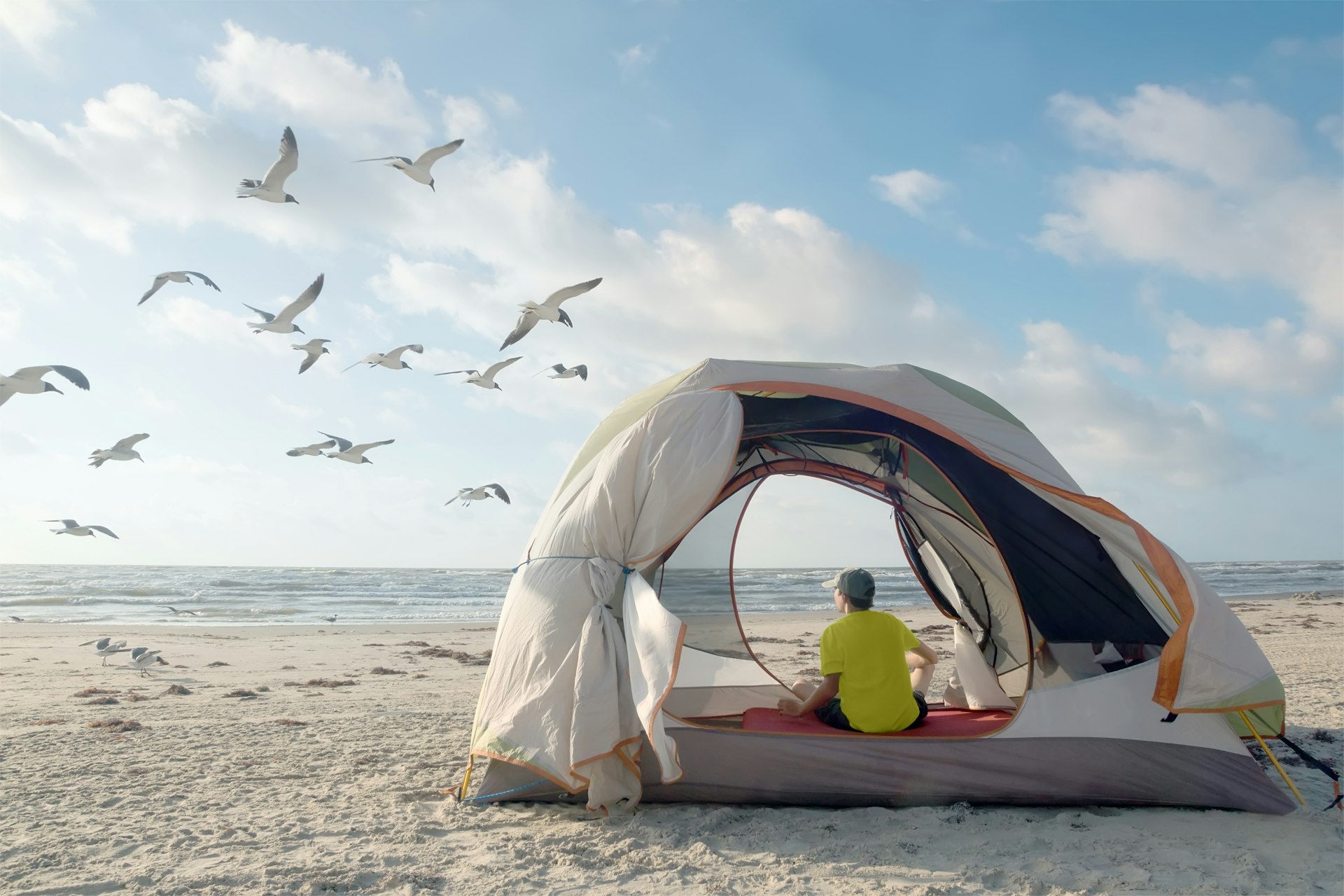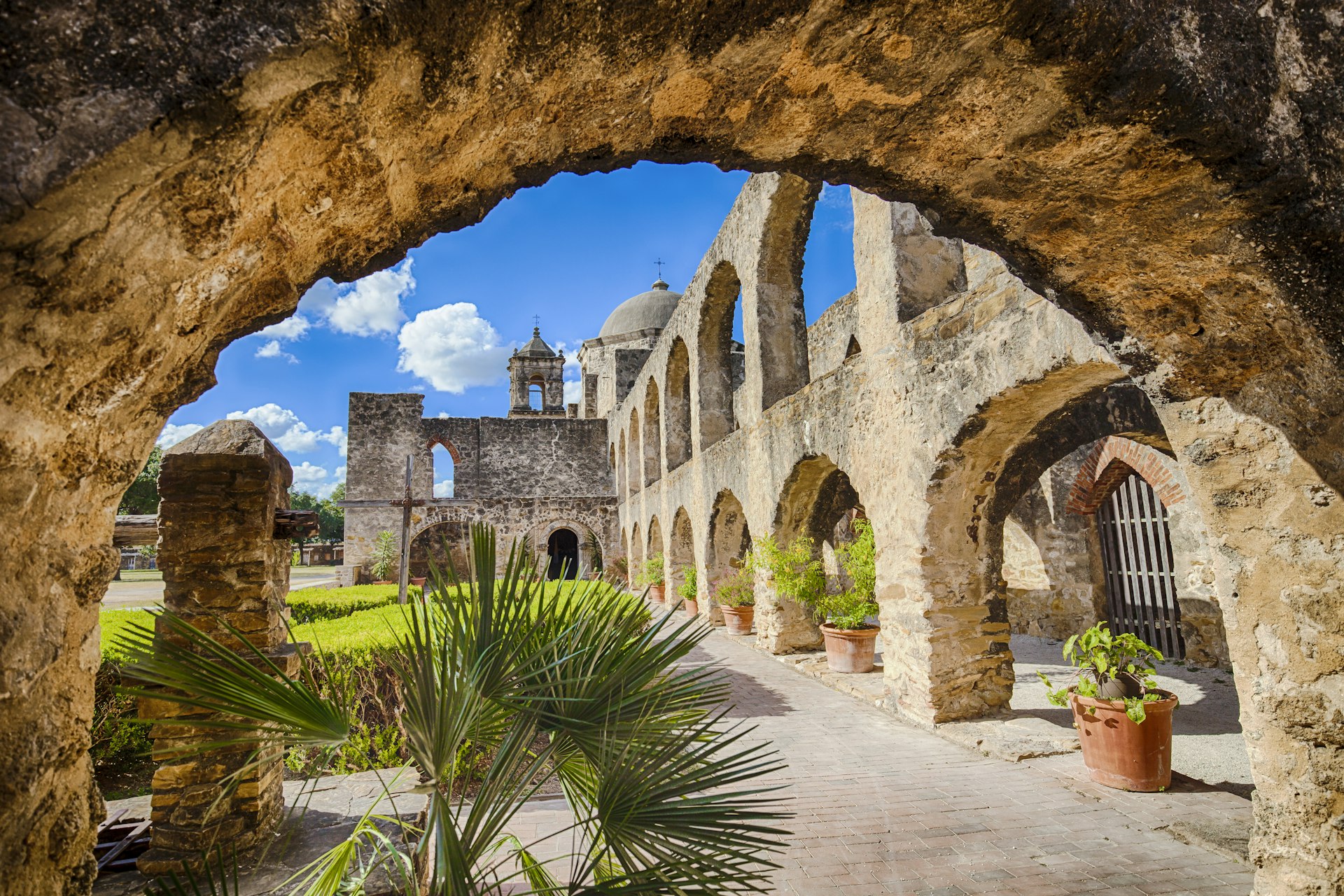Everything is bigger in Texas, from the ranches to the portions, but the state’s two national parks are true giants. Big Bend National Park in West Texas covers a staggering 1252 square miles of the Chisos Mountain range and the Rio Grande basin, while the state’s highest peaks and colorful fall foliage lure hikers to 135-sq-mile Guadalupe Mountains National Park, beyond the oil-field emptiness of the Permian Basin.
As well as these two top-tier national parks, a slew of other protected reserves, from scenic seashores and ancient flint quarries to Spanish Colonial missions and frontier forts, welcome travelers who have history and geology as well as recreation on their minds. Here’s our pick of Texas’s top protected spaces.
1. Big Bend National Park – best for stargazing
Rising like a rock-walled fortress from the Chihuahuan Desert, the jagged Chisos Mountains anchor Big Bend National Park, which sprawls across 1252-sq-miles (3242-sq-km). Hiking trails twist across the forested slopes of the Chisos while the aptly named Window View Trail unveils a mountain-framed view of the sunset from the Chisos Basin. Beyond the mountains, the desert reveals its secrets via roadside pull-offs and hiking trails, where you can examine historic frontier ruins, dinosaur fossils and desert flora up close. The recommended Ross Maxwell Scenic Drive ends with a view of the sheer limestone walls of Santa Elena Canyon.
What sets Big Bend apart from other national parks? Its vast dark skies. At night, the sky is a coal-black canvas where stars, planets, galaxies and comets strut their celestial stuff with unparalleled clarity and brightness. Thanks to its remote location and the lack of intrusive artificial light from cities and highways, the park earned a gold-tier International Dark Sky certification in 2012. If you can, spend a night in the park and attend one of its evening stargazing events.
Beyond stargazing, popular activities include hiking, cycling and paddling on the Rio Grande, which separates the park from Mexico. The upper 69 miles of the 196-mile-long Rio Grande Wild & Scenic River runs alongside the national park and Amistad National Recreation Area, a hotspot for boating and watersports that is 230 miles east of Big Bend by car. Due to extremely high temperatures in summer and chilly mountain conditions in winter, the best seasons to visit are spring and fall.
2. Guadalupe Mountains National Park – best for fall foliage
How do people find this secluded national park? Most likely by accident, while driving between El Paso and Carlsbad Caverns National Park in New Mexico. The lack of crowds is just one of many upticks for this remote reserve. More than half of the park is federally designated wilderness and, to keep things wild, there are no paved roads. You won’t find any formal lodging or restaurants either. What you will find is the highest point in Texas, alongside gypsum dunes, deep canyons and an exposed 265-million-year-old fossilized reef, which formed when a vast tropical ocean covered the region.
The park is 110 miles east of El Paso and 42 miles southwest of the visitor center at Carlsbad Caverns. Every fall, leaf peepers from across Texas converge on McKittrick Canyon for its colorful foliage display, one of the state’s best. Bringing the brightest colors are the bigtooth maples, which blaze yellow, orange and red from mid-October through mid-November. Check the Fall Colors Report for the latest information on the annual color show.
More than 80 miles of hiking trails crisscross the park, swinging through canyons, riparian woodlands and the Chihuahuan Desert. The Guadalupe Peak Trail climbs past pinyon pines and Douglas firs to the peak known as “The Top of Texas”, which lords above the rest of the state at a height of 8751ft (2667m). There are three developed campgrounds in the park – spaces at Pine Springs and Dog Canyon can be booked through the government’s recreation portal.

3. Fort Davis National Historic Site – best for time travel
Fort Davis feels eerily timeless. The red-brick houses standing smartly along Officers’ Row beneath Sleeping Lion Mountain have hardly changed since they were built in the 1880s. Periodic bugle calls are a literal blast from the past, loudly reminding visitors of the fort’s military past. In summer, reenactors in period garb go a step further, stationing themselves at various buildings around the fort’s parade grounds.
Visitors can step inside the barracks, the commissary, the post hospital and other buildings to learn what life was like for the soldiers sent here to protect mail coaches and freight wagons on the San Antonio-El Paso road from Comanche and Apache attacks. From 1867 to 1881, Fort Davis was staffed exclusively by black cavalry and infantrymen who enlisted after the American Civil War to help the frontier effort.
Hikers can follow the Fort Access Trail into Davis Mountains State Park, where sunsets cast a vivid glow across the scrubby mountains. The Civilian Conservation Corps built the first section of Indian Lodge – known for its striking white exterior – in the 1930s. Today, it’s an atmospheric hotel, with a pool, adobe-walled rooms, and a big program of ranger activities.

4. Padres Island National Seashore – best for beaches
Stretching southeast along the Texas coastline, Padres Island National Seashore is a haven for both humans and wildlife. Within this protected reserve, you’ll find windswept beaches, rounded dunes, flat grasslands and tidal flats, strung out along a skinny, 70-mile-long barrier island ribboning between the Gulf of Mexico and the Laguna Madre. The seashore is a favored nesting and resting spot for Kemp’s Ridley sea turtles and more than 380 species of birds have been spotted here.
Recreational activities include windsurfing, canoeing, kayaking, and driving on the beach. Paddlers and windsurfers gather on the hyper-saline lagoon, which is tangibly saltier than the ocean, and sport-fishing is popular in both the Gulf and the lagoon. There are two developed campgrounds at the park and three primitive camping areas. Note that the National Seashore is on North Padre Island about 25 miles from Corpus Christi – this is not the same as the commercially developed South Padre Island further south.
5. Alibates Flint Quarries National Monument – best for geology
Humans arrived 65 million years too late to coexist with dinosaurs, but they did share the high plains of the Texan panhandle with mammoths and other Ice Age animals about 13,000 years ago. Prehistoric mammoth hunters harvested the colorful Alibates flint for spear points and for tools for stripping carcasses of meat, and later Native American hunters used the flint for darts and eventually for arrowheads for their bows and arrows. The indigenous peoples that lived in Antelope Creek dug hundreds of quarries to find the strongest pieces.
Today, rangers lead daily two-mile hiking tours of the quarries, which were used between 1150 and 1450 CE. Add to the experience by camping at one of the eleven free campgrounds at the adjacent Lake Meredith National Recreation Area, a man-made lake along the Canadian River 40 miles northeast of Amarillo that has become a major water sports adventure zone.

6. San Antonio Missions National Historical Park – best for a sense of history
Four Spanish colonial missions – Concepción, San José, San Juan Capistrano and Espada – flank the 6½-mile Mission Trail, which stretches south from the outskirts of downtown San Antonio along the San Antonio River. Constructed in the early 1700s to serve as way stations for the Spanish colonial expansion effort, the missions dramatically altered the religion, language and lifestyles of the region’s indigenous peoples, collectively dubbed the Coahuiltecans.
Mission Road connects the four missions but you can also get here on the more peaceful Mission Reach Hike & Bike Trail (and bike rentals are easy to find in San Antone). The hiking and cycling trail also links to the Alamo, which was the first San Antonio mission and a legendary battleground during the Texas Revolution. The historical park’s main visitor center is located at Mission San José, but religious services are still held in all four missions.
7. Big Thicket National Preserve – best for paddling
Three paddling trails meander through the Big Thicket National Preserve in southeast Texas, a one-time hideout for Civil War draft dodgers. Depending on the route, kayakers and other paddlers can wind through cypress bayous or trace the edge of the white-sand creek and river beaches. To make a night of it, hike or paddle to primitive back-country sites – just pick up a free permit at the visitor center.
Paddling isn’t the only activity at this sprawling preserve. The reserve’s hiking-and-biking trails cross nine different ecosystems. The uplands are filled with longleaf pines soaring skyward, and the forested slopes are thatched with beeches, magnolias and loblollies. At lower levels are primordial swamps haunted by bald cypress and tupelo trees – and lurking alligators. Look out for carnivorous pitcher plants in well-watered areas.
8. Lyndon B Johnson National Historical Park – best for followers of the national story
Maintained by the Texas Parks & Wildlife Department, Lyndon B Johnson’s country ranch in Stonewall, dubbed the Texas White House, offers a fascinating glimpse of the personal interests and working habits of America’s 36th president. While Johnson may have been geographically distant from Washington, DC on his trips home, his well-outfitted presidential office and on-site airplane hangar reveal he was never far removed from the issues confronting the country during the turbulent 1960s.
The historical park encompasses Johnson’s childhood home in Johnson City, which is 14 miles east, as well as the green acres of the family ranch. The oak-shaded family cemetery, where LBJ and his wife Lady Bird are buried, is on the grounds of the ranch. Note that the ranch house has been temporarily closed for ongoing structural repairs, but you can still view the humble house that was the former president’s birthplace.
